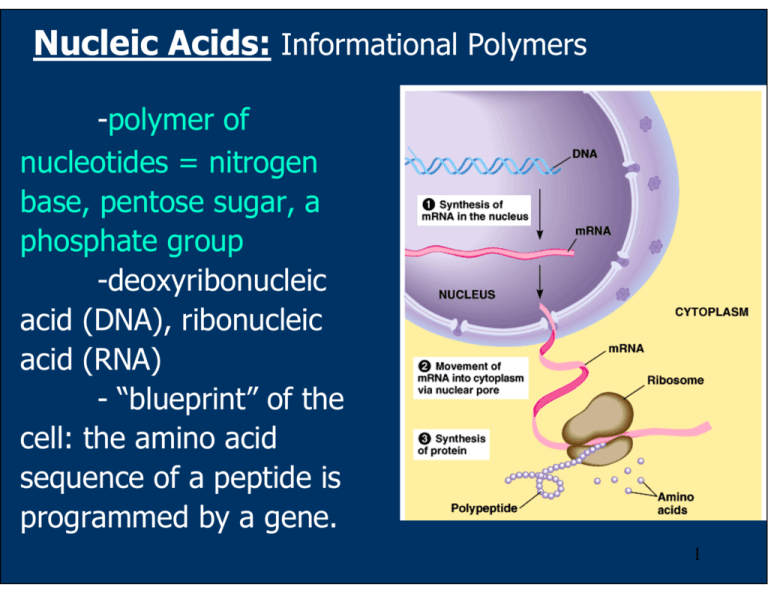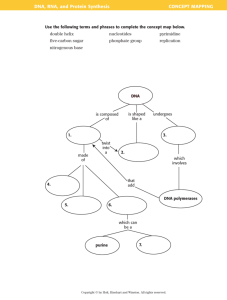polymer of nucleotides = nitrogen base, pentose sugar, a phosphate
advertisement

Nucleic Acids: Informational Polymers -polymer of nucleotides = nitrogen base, pentose sugar, a phosphate group -deoxyribonucleic acid (DNA), ribonucleic acid (RNA) - “blueprint” of the cell: the amino acid sequence of a peptide is programmed by a gene. 1 Information Flow in the Cell mRNA DNA peptides protein DNA DNA DNA DNA = = = = A G C T RNA RNA RNA RNA = = = = U C G A 2 DNA = A,T,G,C RNA = A, U, G, C 3 4 5 Nucleotides are linked together by phosphodiester bond between the pentose sugar and phosphate group. In the nucleotide strand the alternate pentose and phosphate linked by this covalent bond is the backbone of the DNA strand which is hydrophilic. 6 DNA = double stranded helix -the alternating phosphate and sugar held by phosphodiester bonds are the backbone of the helix -phosphate groups are on the outside of the helix -nitrogen bases are paired in the interior of the helix -the 2 strands are complementary to each other: A::T G:::C 7 -the DNA strands are twisted with 360A or ~ 10 base pairs per turn -the 2 strands are held by hydrogen bonds between the paired bases and Van der Waals interactions between the stacked bases Watson-Crick Model of the DNA Structure 8 9 DNA Replication -DNA is copied and passed to the next generation (inheritance) -DNA can be copied due to the complementary base pairing: A-T, G-C -5’ 3’ of newly synthesized strand 10 Comparison of amino acid sequences of proteins or nucleotide sequences of genes can lead to the evolutionary divergence of related organisms. 11 Nucleotides Carry Chemical Energy in Cells 12 Adenine Nucleotides -components of many enzyme cofactors -act as an electron acceptor in the biological oxidation reaction Example: -NAD+ -NADH -NADP+ -NADPH -FAD -FADH2 -Coenzyme A 13 14 15 16





